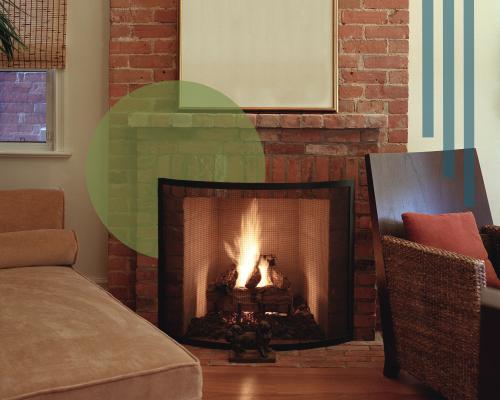
There’s something romantic about sitting by an open fireplace in winter time. But there’s growing evidence of the damage wood-fired heaters and open fires are doing to our health – and the environment.
As a group of University of Technology Sydney academics recently put it – “a wood-fired heater is like having a truck idling in your living room all day (albeit with the bulk of the emissions escaping via the chimney)”.
So what do we know about wood burning and are there alternatives for those wanting a cosy open-fire feel in their home without damaging the Earth?
What the evidence says
According to a 2024 study, wood burning in fireplaces and heaters is one of the biggest sources of air pollution in many parts of Australia. While only about 10% of Australian homes use wood burning as their primary heat source, they create more than half of Australia’s fine particulate pollution.
The health costs of this are bad enough, but the effect on the planet is also significant. Even so-called eco friendly wood heaters are doing damage – producing more particulate pollution than a modern truck.
That’s because burning firewood in fireplaces and domestic heaters produces methane and black carbon particles that worsen global heating. One study estimates that wood heaters cause as much or more emissions than gas or reverse-cycle air conditioning. On top of that, much of the firewood sold in urban areas comes from forest timber – further depleting essential carbon banks.
Lisa Cunial is a psychologist who has lived in Orange in NSW for more than 20 years. She says Orange is cold for seven months of the year and a lot of people use wood-burning heaters in their homes. “Being quite a major regional city, it’s a real problem.”
After the 2019 bushfires, Cunial ended up in hospital with severe breathing difficulties. “Wood is very much part of the culture here. But for me it means I literally have to stay inside the house with air filters even though I live near bushland and a wetland,” she says.
Mapping wood heater pollution
Fay Johnston, the director of the Centre for Safe Air and professor of environmental epidemiology at the University of Tasmania’s Menzies Institute for Medical Research recently created a wood heater pollution map showing which parts of Australia are estimated to have the most severe air pollution from wood heaters.
“When people think of pollution they often picture smokestacks, vehicle exhaust and coal-fired power stations, but wood heaters pollute more fine particulate matter into the air we breathe than any of these sources,” she says.
Johnston also points to the impact of firewood collection on Australia’s forests and habitat. “One study estimated that, if we stopped burning wood and clearing forest for heating, Australia would reduce its annual greenhouse gas emissions by 8.7m tonnes each year, about one-fifth of Australia’s car emissions.
What can you do?
According to Arabella Daniel, a Melbourne inner-city councillor and clean air community advocate who runs My Air Quality Australia, in the absence of strong public health or climate messaging, wood heating is wrongly seen as desirable and natural. “That lifestyle image is pushed, but the health [and environmental] impacts are ignored,” she says.
Wood heaters are sold cheaply with no warnings, despite evidence of serious environmental harm. “Burning wood is normalised, yet it worsens air pollution and contributes to climate change. Harvesting firewood damages biodiversity and depletes forests.”
She says now is the time for the Australian government to recognise wood heater pollution as a serious public health and climate issue, and to provide subsidies to phase them out over time, beginning with stopping new wood heater installations.
“Providing financial support to help people switch to clean, efficient, electric alternatives is cost effective. Public education is vital – people need to understand the health risks and the benefits of going electric. Such government action is already happening with getting off gas – we need to get off wood too.”
Johnston agrees, saying it’s time for governments to restrict the installation of new wood heaters in high-density residential areas where people will be affected by smoke pollution. “Point-of-sale legislation should be introduced requiring wood heaters to be replaced with non-polluting electric alternatives before a property changes hands.”
She says while we have sophisticated systems in place for food and water standards, “the problem of wood heaters has persisted because no environment or health authority in Australia sees themselves as bearing primary responsibility” for it.
Are there alternatives?
While there are some wood burning heaters that produce less emissions than others, including this ultra-low emission model developed in New Zealand, Daniel says the emissions from those models may still be too high to be safe for health or the climate.
“Those models were tested on NZ softwoods and not Australian hardwoods so the emissions will be greater here. All of these models still emit climate pollution and threaten our forests. We know the best alternative is for clean, electric split systems.”
She says for those who want the cozy appearance of a roaring fire in their homes without the climate impacts, the best option is an electric fireplace. There are plenty of different kinds of systems on the market that offer the appearance of a warm glowing flame but without any emissions.
These might not have the same romantic feel as wood, but you’ll be doing the climate – and your health – a favour.







